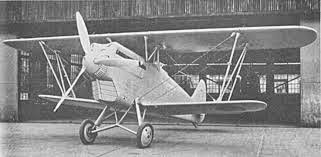Built by Kawasaki Kōkūki Kōgyō K.K. for the Imperial Japanese Army, it saw combat service in Manchukuo and in north China during the early stages of the Second Sino-Japanese War. Its reporting name given by the Allies was "Perry".
Although the low-wing monoplane offered by Nakajima was more advanced, the Army preferred the more maneuverable biplane offered by Kawasaki. In order to overcome the speed disadvantage the Kawasaki team used a metal three-blade propeller in the third prototype, while flush-head rivets were used in an attempt to reduce drag.
General characteristics
Crew: one, pilot
Length: 7.2 m (23 ft 8 in)
Wingspan: 10.02 m (32 ft 10½ in)
Height: 3 m (9 ft 10⅛ in)
Wing area: 23 m² (247.569 sq ft)
Empty weight: 1,360 kg (2,998 lb)
Loaded weight: 1,740 kg (3,836 lb)
Powerplant: 1 × Kawasaki Ha9-IIa, 634 kW (850 hp)
Maximum speed: 400 km/h at 3000 m (248.5 mph at 9,845 ft)
Range: 1,100 km (684 mi)
Service ceiling: 11,500 m (37,730 ft)
Rate of climb: 1,000 m/min (3,280 ft/min)
Wing loading: 75.7 kg/m² (15.5 lb/sq ft)
Power/mass: 0.36 kW/kg (0.48 hp/kg; 0.22 hp/lb)
Armament: 2× fixed, forward-firing 7.7 mm (.303 in) Type 89 machine guns
The Kawasaki design had sesquiplane (unequal-span) wings, braced by struts, and with upper-wing ailerons. The structure was of all-metal construction, which was then fabric-covered. Armament consisted of two 7.7 mm (.303 in) Type 89 machine guns, synchronized to fire through the propeller. The initial production version was powered by a liquid-cooled 633 kW (850 hp) Kawasaki Ha9-IIa V-12.
The Ki-10 was deployed in Manchukuo (Manchuria) and in the initial campaigns of the Second Sino-Japanese War in northern China. It proved an excellent dogfighter against the Chinese air force, including those active at the Battle of Wuhan. However, by the time of the Nomonhan Incident (Battles of Khalkhin Gol) in 1939, against the forces of Soviet Russia, it was largely obsolete.
At the beginning of the Pacific War, the Ki-10 was retired to training and secondary missions, but later returned to front-line service, performing short-range patrol and reconnaissance missions in Japan proper and China in January–February, 1942.








Ei kommentteja:
Lähetä kommentti
Kaikenlaiset kommentit ovat tervetulleita.